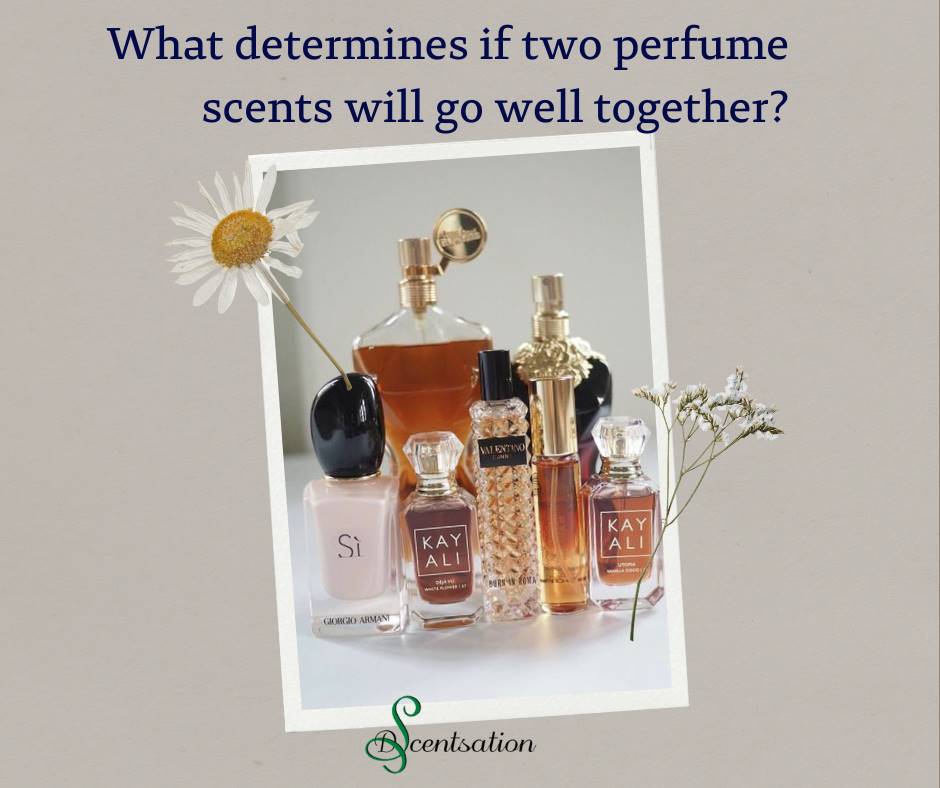What Determines If Two Perfume Scents Will Go Together

Introduction
Choosing a Perfume Brand can be a personal experience that is influenced by individual tastes and preferences. However, sometimes we might want to mix and match different scents to create our own unique blend. But how do you know which scents will complement each other? In this article, we explore some factors that determine whether two perfume scents will go together.
Complementary Notes
One of the most important factors in creating a successful fragrance combination is choosing scents that have compatible notes. Each perfume has a specific set of notes that make up its overall scent profile. These notes include top notes (the initial impression), middle notes (the heart of the fragrance), and base notes (the lasting impression).
Complementary notes refer to notes that naturally pair well together. For example, sweet, floral notes like rose often complement earthy, woody notes like sandalwood. On the other hand, fresh, citrusy notes may not work as well with heavier, spicy notes such as cinnamon. When choosing two scents to wear together, consider their primary notes and ensure they complement rather than clash.
Similar Intensity
Another factor to consider when combining perfumes is their intensity levels. Fragrances come in different concentrations, ranging from light eau de toilettes to rich, long-lasting extraits. Wearing two strong fragrances at once can lead to overpowering one another, resulting in a discordant scent signature. To avoid this, choose either both light or both heavy fragrances or layer them appropriately.
A lighter eau de toilette can provide just enough background depth without competing against a fuller fragrance. Alternatively, try applying the stronger scent first, letting it dry down slightly before adding the second fragrance, allowing for better integration.
Personal Preference
Ultimately, deciding whether two popular perfume scents will go together comes down to personal preference. While certain ingredients may complement each other, it's possible that you simply don't find them appealing together. It's all about exploring and having fun with your collection. Don't be afraid to try unexpected combinations or indulge in unusual accords. Your unique sensory experiences are part of the beauty of fragrance, so trust your instincts and create scent stories that delight and inspire you personally. Keep playing around until you discover thrilling blends that showcase your distinctive flair. Embrace the joy of olfactory creativity!
Experiment With Blending Techniques
Beyond basic layering, there are various ways to blend multiple fragrances together. Discover innovative methods of merging scents into harmonious ensembles. For starters, try dabbing or spritzing smaller amounts onto pulse points, then diffusing with your preferred method or testing the progression throughout the day. This allows you to see how the blend develops over time and adjust accordingly. You could even attempt making your own solid perfume or room spray, incorporating a variety of scents into a cohesive formula tailored to your preferences. There's unlimited potential for inventiveness when it comes to constructing captivating aromatic combinations. Get hands-on with your perfumes and learn through trial and error to perfect your approach.
The Basics of Fragrance Combinations
When it comes to choosing the right fragrance combination, it helps to understand the basics first. Familiarize yourself with the different types of fragrances such as top, middle (heart), and base notes. These refer to the order in which the different components evaporate, with the top notes being the most fleeting and the base notes lingering longest. When picking a combo, aim for balance between the three. Top notes provide freshness, middle notes bring depth and character, while base notes supply longevity.
Consider Skin Chemistry
The way a fragrance interacts with one's skin plays a significant role in determining its overall impact. Some people naturally enhance floral fragrances, while others may amplify woodsy or leathery elements. Understanding how your body modifies a scent can help in deciding if it pairs well with another. If you notice specific changes happening when you wear a particular perfume, take that into account when combining different fragrances.
Experiment Beyond Basic Layering
Layering involves applying one fragrance after another, but there are plenty of other ways to combine perfumes. You can use Solid Perfumes, Room Sprays, or Colognes to enhance your scent profile. Spritz a little bit of your existing eau de parfum or eau de toilette spray onto a scarf or accessory before adding complementary layers. Another option is to dilute a concentrated oil formulation in a carrier liquid for a lighter effect. Play around with various techniques and products to suit your needs.
In conclusion,
mixing and matching fragrances requires careful consideration of several aspects, including note compatibility, concentration, skincare routine, and application timing. By paying attention to these details, you'll increase your chances of creating harmonious combinations that reflect your personal style and mood. Remember, experimentation is essential - don’t be afraid to try new things! With patience and practice, you can master the art of combining perfumes to achieve intriguingly original results.




Comments
Bhucwa —
I appreciate your understanding and support if I don’t touch I won’t learn